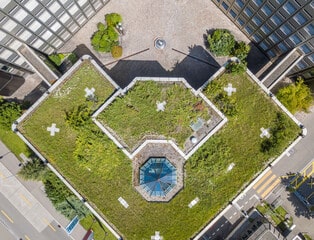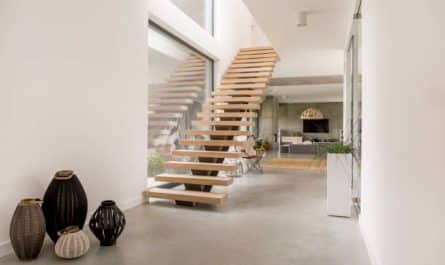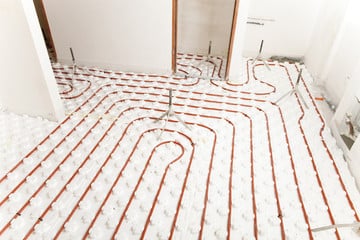Faced with increasing urbanization and the reduction of green spaces, roof gardens appear to be an innovative solution to improve our living environment while providing multiple environmental benefits. In this article, we will explore the concept of these urban oases as well as their concrete achievements.
What is a roof garden?
A roof garden, also called a green roof, is a green space installed on the terrace or roof of a building, generally located in an urban environment. This ecological design not only creates harmonious spaces between architecture and nature but also promotes biodiversity and sustainability in our cities.
Roof gardens can take different forms: from simple lawns to vegetable gardens through to more elaborate systems integrating trees, perennial plants and dedicated infrastructure (water circuits and lighting system). They have become true havens of peace where flora and fauna develop in cohabitation with human habitats.
The advantages of roof gardens
Heat recovery and sound insulation: A roof garden offers excellent thermal and sound insulation to buildings. In fact, the plant layer forms a screen which captures the sun’s rays and absorbs rainwater, thus reducing the temperature inside buildings in summer, while ensuring better insulation in winter. In addition, these green spaces reduce noise pollution thanks to their natural absorbent layer.
Improved air quality: Plants on roof gardens capture polluting particles and produce oxygen through photosynthesis, thus helping to purify urban air.
Biodiversity and sustainability: These green spaces provide a suitable habitat for many animal and plant species, thus promoting urban biodiversity. In addition, they allow optimal management of rainwater thanks to their absorption and retention capacity.
Types of Roof Gardens
Light roofs
This type of green roof is composed of a thin layer of substrate and plants resistant to extreme weather conditions. These are mostly low-maintenance succulents and grasses. This system is very suitable for buildings with low load-bearing capacity and requires few structural modifications.
Semi-intensive roofs
Semi-intensive roofs are designed with a greater thickness of substrate and a wider variety of plants, generally perennials and small shrubs. These roof gardens require regular maintenance and a higher load-bearing capacity than lightweight roofs. They provide an environment conducive to the flourishing of more diverse biodiversity.
Intensive roofs
These roof gardens represent the most complex and expensive systems. They can accommodate trees, lawns and infrastructure such as water basins or walking paths. This type of roof requires significant structural reinforcements and sustained maintenance. However, they offer vast green spaces capable of transforming the urban landscape and significantly improving the quality of life of residents.
Notable Examples of Roof Gardens Around the World
The Acclimatization Garden, located on the roof of the Musée du quai Branly in Paris, France, is an impressive green space dotted with trees, pools of water and winding paths allowing visitors to recharge their batteries in the heart of the French capital.
The High Line, suspended park built on a portion of a former elevated railway line in New York in the United States, offers an exceptional walk punctuated by plantations and public benches with a breathtaking view of the city.
The Sky Garden, a panoramic garden terrace located at the top of the 20 Fenchurch Street skyscraper in London, United Kingdom, is an example of landscaping combining luxury and nature by offering a breathtaking view of the rooftops of the British metropolis.
How to create your own roof garden?
- Evaluate the bearing capacity: It is essential to call on a professional to check if the structure of the building will support the additional weight linked to the garden arrangements (substrate, plants, water, etc.).
- Determine the type of garden: Depending on the load-bearing capacity of your roof, choose between a light, semi-intensive or intensive system.
- Prepare waterproofing and drainage: A waterproof membrane must be put in place. Also consider installing a drainage system to evacuate excess water and protect the roof.
- Select the right plants: Choose species that will withstand extreme weather conditions and require minimal maintenance depending on the type of garden chosen.
- Install the desired amenities: Roof gardens can be decorated with street furniture, benches, paths, water basins, etc., depending on your preferences and your budget.
Roof gardens are a major issue in the fight against environmental challenges and the improvement of our living environment in urban areas. They offer a concrete response to certain problems such as air pollution, global warming and the disappearance of green spaces. So why not consider creating a roof garden for your own home or work space?







